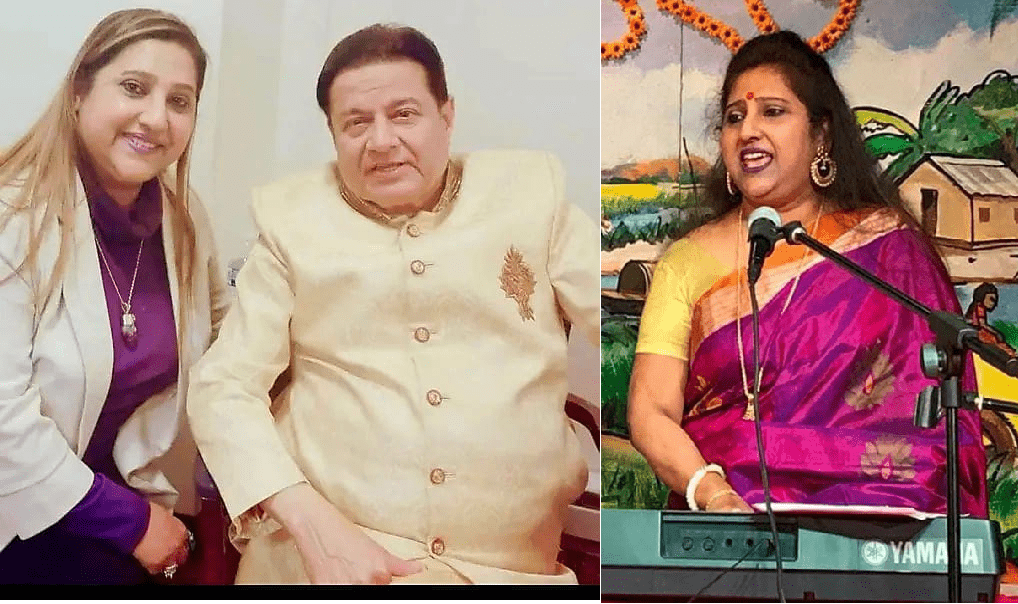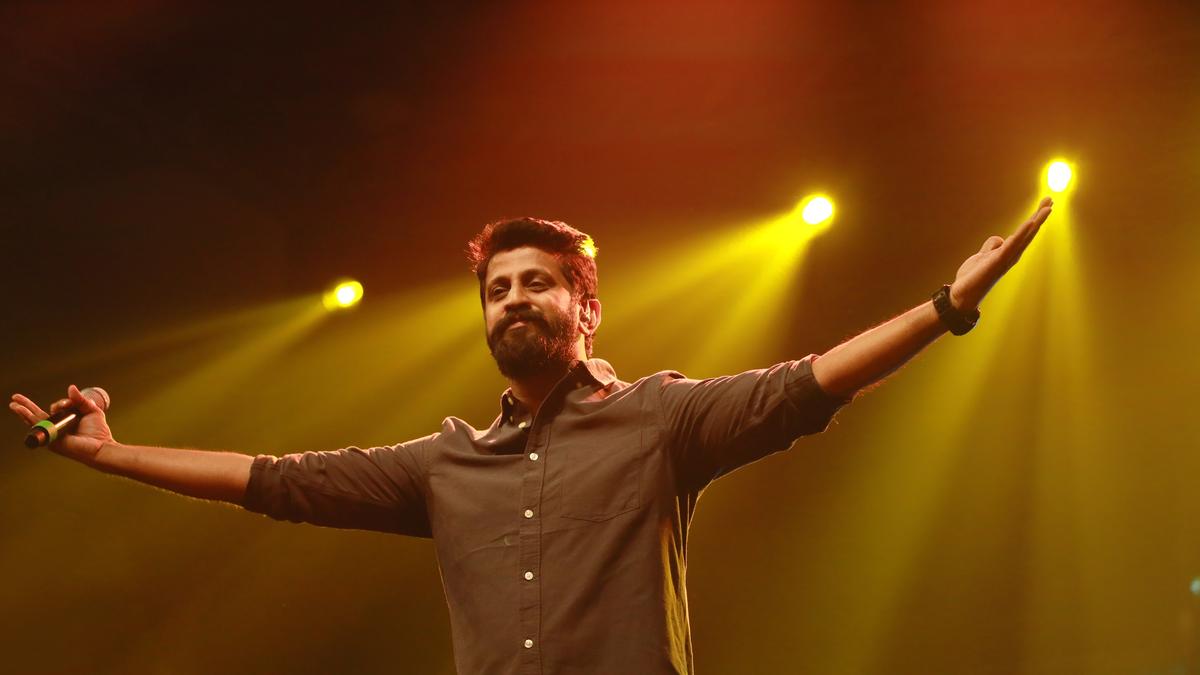[ad_1]

The jugalbandi by Vikas Babu on the shehnai and Phil Scarff on the soprano sax, accompanied by Bhushan Parchure on the tabla.
| Photo Credit: Special Arrangement
Taking the stage close to 5 a.m. (eighth prahar according to Hindustani music time cycle), they commenced with raag Ahir Bhairav, which though a first prahar raag, can be sung during Brahma Muhurta.
Melange of styles
Vikas began with a vilambit alap in Ektaal. Initially Phil, an exponent of Indian classical music on the soprano sax, mirrored every phrase played by Vikas before moving on to bluesy notes, a la collective improvisation in jazz, predicated on the Mixolydian b2 mode (to which the Hindustani raag closely corresponds). If the base-melody were to be isolated, it would have been a stand-alone strain, but nowhere in the mix was it sonically incongruous. His application was completely couched in the spirit of Hindustani music, which he learnt from six gurus, the prominent among them being Pt. Shreeram Devasthali.
Brimmed with bhakti
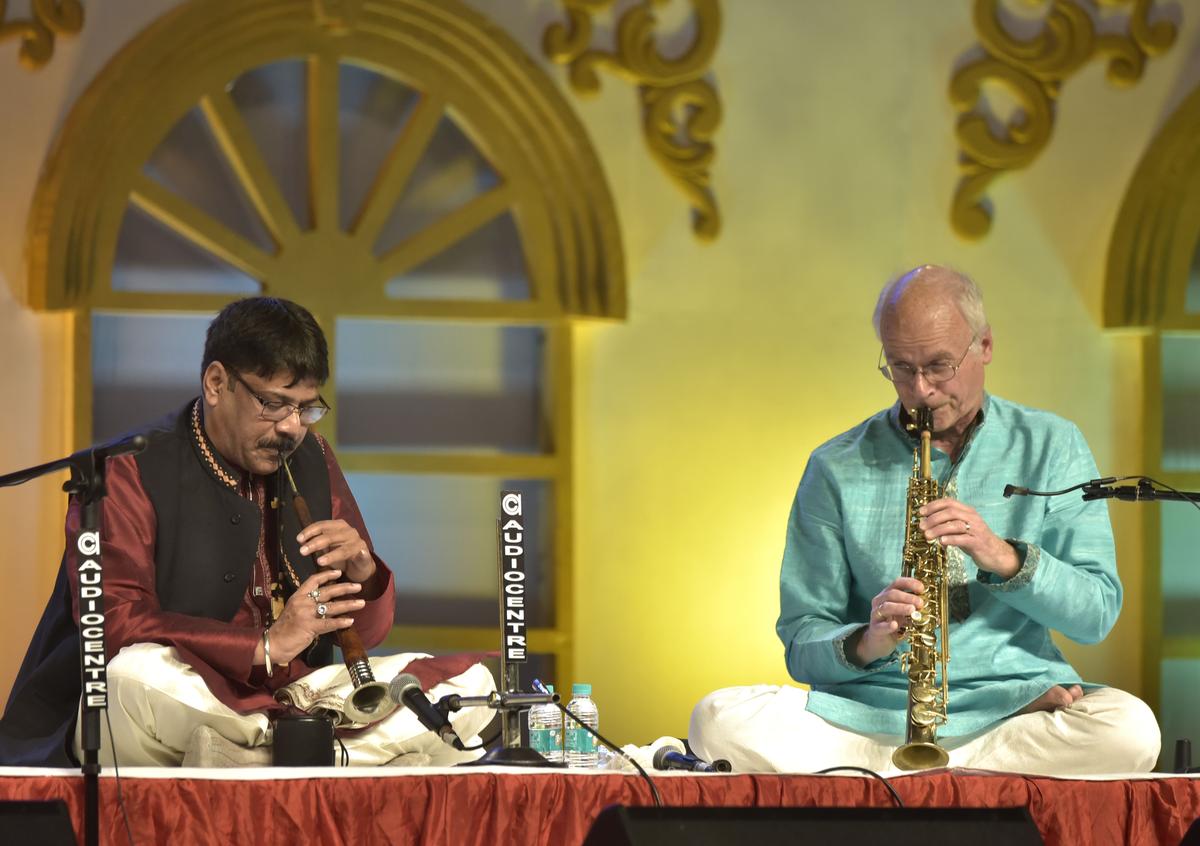
Phil Scarff (sax) mirrored every phrase played by Vikas Baby (Shehnai) before moving on to bluesy notes.
| Photo Credit:
SUJOY
On his part, Vikas’ Benaras gharana style, imbibed from Ustad Bismillah Khan’s disciple Vishnu Prasanna, behind whom Vikas had sat on this dais a few years ago as a backing instrumentalist, was apparent from his embouchure. Brimming with bhakti rasa, he etched out the pre-sunrise gravitas with clarity. The projection was in gayaki ang with more emphasis on sur than on taan. Mention must be made of the reverb he settled on, which really precipitated the voicing.
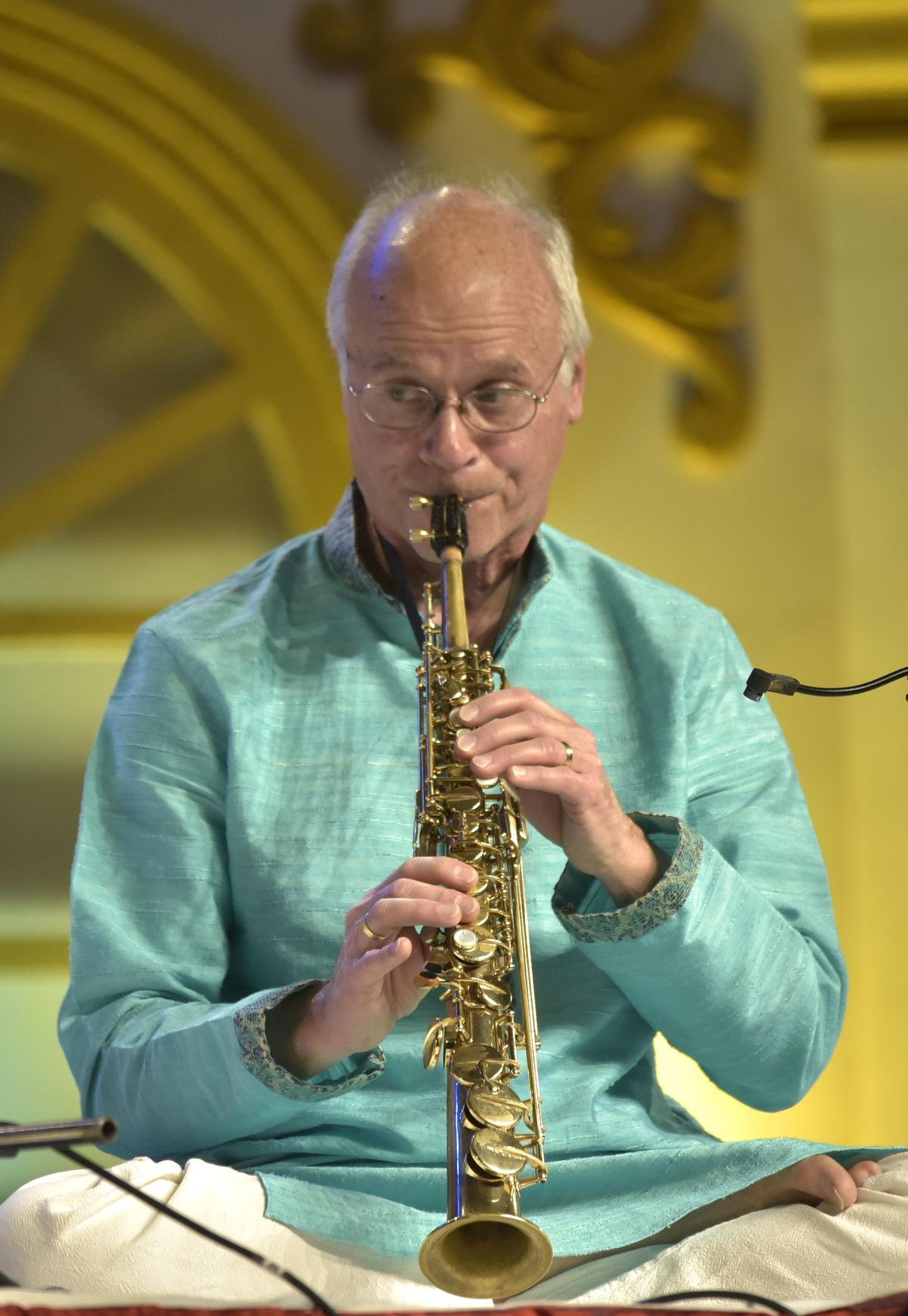
Phil Scarff is an exponent of Indian classical music on the soprano sax.
| Photo Credit:
SUJOY
Bhushan’s drut bandish heralded the accelerando in Teentaal, eschewing the announced madhaylay, perhaps under duress to perform within an hour. During the passagework of his own sargam composition in Teentaal, Shehnai being an 1.5 octave instrument, Vikas displayed expertise in the upper octave ‘pa’ to access ‘dha’. Noticeable also was his upper octave ‘re-sa-ga’ murkis ably supported by Bhushan’s rela. All the while, Phil’s distinct technique, refined under celebrated saxophonist Jerry Bergonzi, stimulated the conversation — sometimes leading and sometimes seconding, as the trio led us to a rosy rising sun with a Chakradhar tihai. They then interpreted Bismillah Khan’s famous kajri in Keherwa taal enhanced by Bhushan’s delicate laggi and dove into a Bengali dhun in Bhairav. Tutored in Punjab gharana both by Ustad Alla Rakha and Ustad Zakir Hussain, Bhushan, who’s also adept in other styles, maintained clear and clean lines throughout.
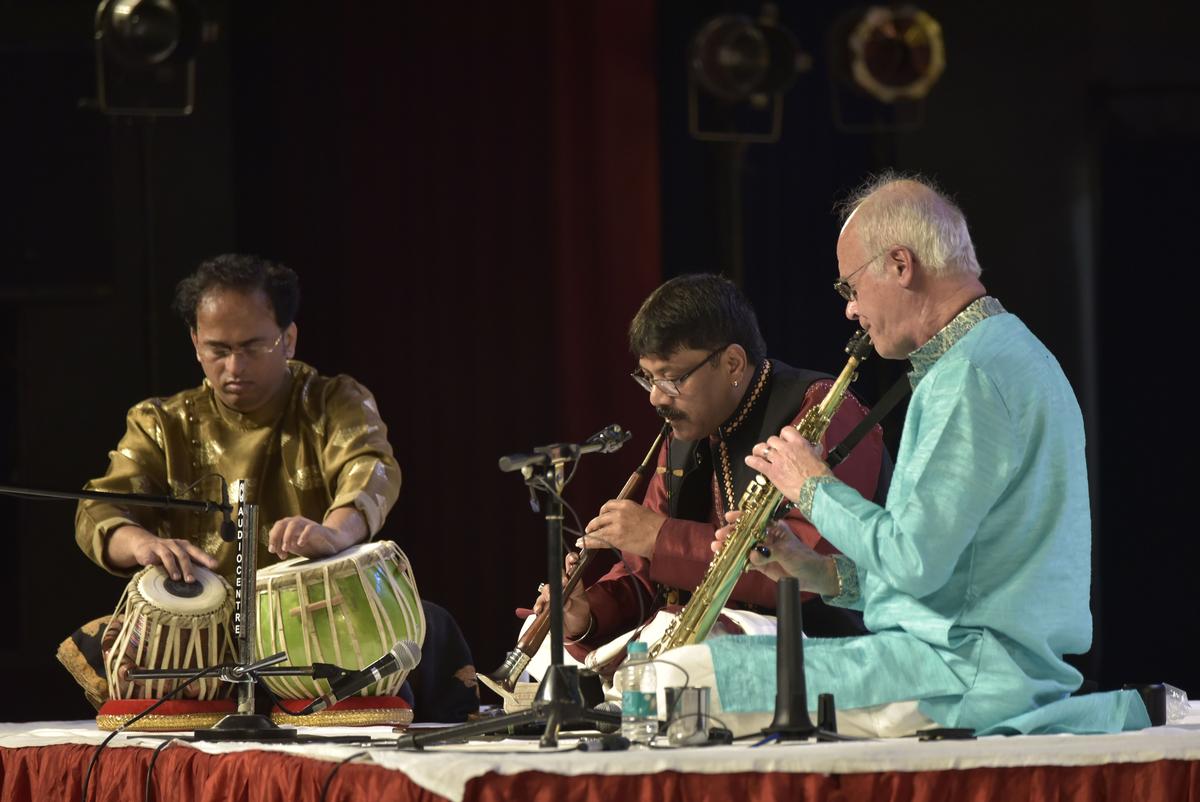
Though there were requests for Phil to play a jazz piece, the trio stuck to the traditional repertoire and played raag Bairagi Bhairav.
| Photo Credit:
SUJOY
Though there were requests for Phil to play Dave Brubeck’s classic jazz piece ‘Take five’, the trio stuck to their repertoire, which included a beautiful raag Bairagi Bhairav. However, bad audio diluted its impact. Audio was a contention all through the festival. The organisers need to work out the niggles.
Again there was an appeal to play Bhatiali. After a brief discussion, Vikas settled on raag Bhatiyar. Phil let the shehnai and tabla make the best of this daybreak raag.
Published – February 05, 2025 10:26 am IST
[ad_2]
Source link


